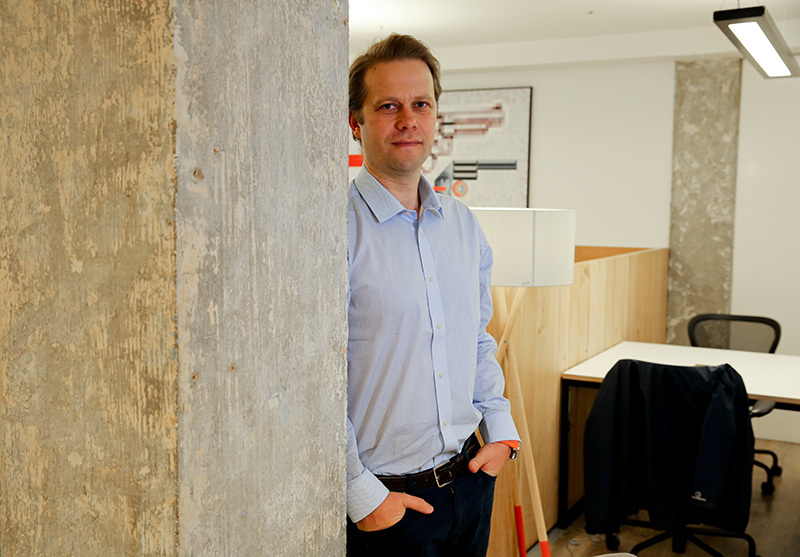Crunching the Numbers
Crunching the Numbers
Anders Petterson, founder of art market analysis firm ArtTactic, talks to ArtScoops about the key role earmarked for new technology in shaping the industry’s future, the characteristics of contemporary MENA art and why transparency remains a topical issue
What prompted you to set up ArtTactic?
Back in 1999, I took the decision to leave the banking industry, in which I’d worked for several years, to focus on something different. I’d developed an interest in art at a young age, so began to think about combining this enthusiasm with my knowledge of the financial markets. As I became more acquainted with the art world, I was struck by the level of secrecy surrounding it and the lack of transparency in the market; it was as if information was being withheld and distributed among just a privileged few. When chatting to friends who were interested in buying art and had the means to do so, I found that many of them shared my views. Their comments ranged from finding the entire process challenging to struggling to reconcile the economic value of an artwork with its aesthetics. When ArtTactic was founded in 2001, I set out to fill this void by educating people about how the art market works and how value is created.
What was the reaction from the art world to the services you began providing?
When we first began compiling global art market intelligence and data, the buying community was much smaller in scale, and largely consisted of connoisseurs and insider collectors. However, things then began to move very quickly; there was a proliferation of new gallery openings in the established cultural hubs, together with a major expansion across the global market. Sales began to rise in tandem, at which point it became clear that prospective buyers were keen to have more sophisticated tools to make their decisions. By 2009, in the midst of the financial crisis, investors were also turning to art, alongside other tangible assets, to diversify their portfolios. This trend deepened the market by creating more service providers within the industry, all of whom needed data for their operations. I’m proud of the fact that we were the first art market research company to use crowd-sourcing as the main tool for collecting qualitative and quantitative data on the art market. Our services today range from trackers and feasibility studies to the ArtTactic Forecaster, which we launched in 2015.

Anders Petterson
Do you think transparency is still an issue in the art market?
Some progress is evident, such as moves to make auction prices accessible, but more could still be done. The market remains asymmetric, with buyers in possession of more information than sellers. For many, buying art is still an intimidating experience that leaves them feeling like outsiders or unwelcome. Art fairs are one such example, sometimes only giving out prices if a buyer asks. It may well be that the next generation of collectors will push for more transparency and want to do things their own way, which could force change.
What major changes have you’ve observed across the international art market over the past decade?
One of the biggest developments has been the emergence of new technology and the role it’s playing in linking buyers and sellers across the markets. Before the advent of digital platforms, artists and audiences relied on gatherings, such as biennials, to come together and network, whereas today, social media platforms are connecting people around the globe, bringing a new dynamic to the world of art. Digitisation will play an even bigger role going forward, as the use of blockchain becomes more common. There are issues that have yet to be addressed, such as validating authenticity online and uncertainty around what people own when it comes to the digital world, but this is undoubtedly the future. We can expect to see the next generation of collectors buying cool digital artwork in cryptocurrency.
What is your research telling you about the MENA region’s art market?
The MENA art market has inevitably gone through cycles over the years, like any segment. There were points at which its performance was somewhat erratic and speculative, but the rollout of related infrastructure in the form of new museums, art fairs, biennials, artist-run initiatives and online platforms has enabled it to settle. A sustainable market requires a well-diversified ecosystem, which takes time to put in place. Major initiatives in hubs such as Beirut, Dubai and Abu Dhabi are instilling confidence in the marketplace, despite the difficult geopolitical situation. These building blocks will benefit the next generation and have positive implications for the future.

Anders Petterson
What do you think has been the impact of regional conflict on contemporary art from the region?
I feel that the contemporary art coming out of the region is more ‘raw’ and political, with an undertone that characterises what’s going on there, which probably means it resonates especially well with the diaspora. What’s also interesting is that this wave of artists appears to be remaining truer to their art than those based in some of the more commercial markets; they haven’t compromised their art to make it more sellable. In the future, many of these works will be recognised for having documented a significant period in history, which is an intriguing thought.